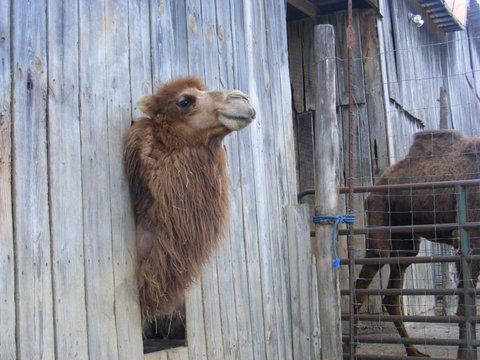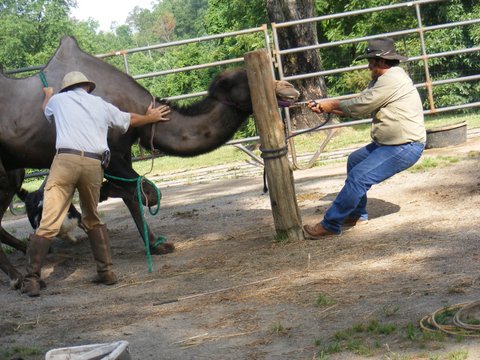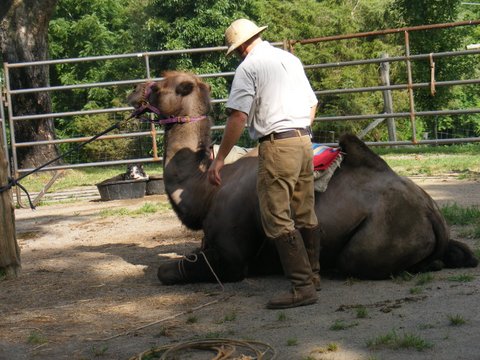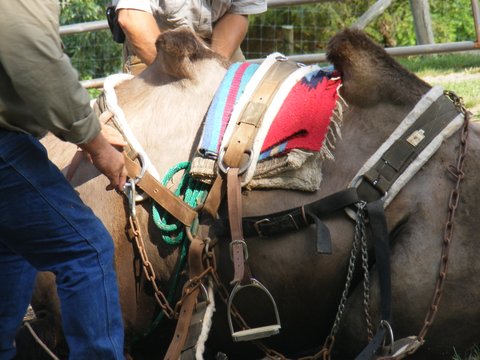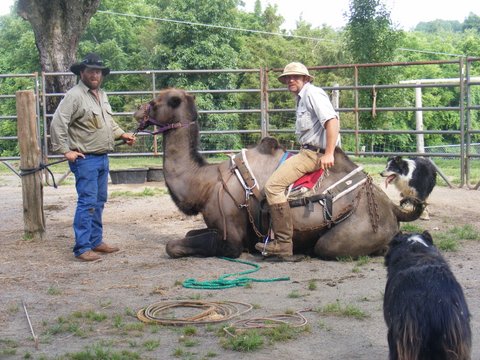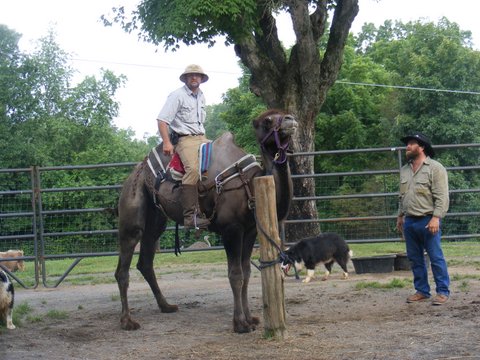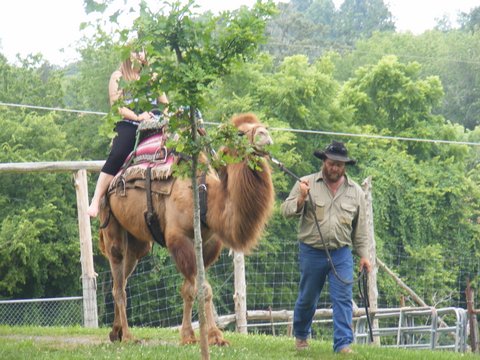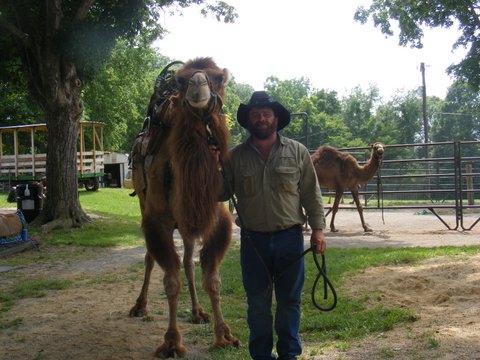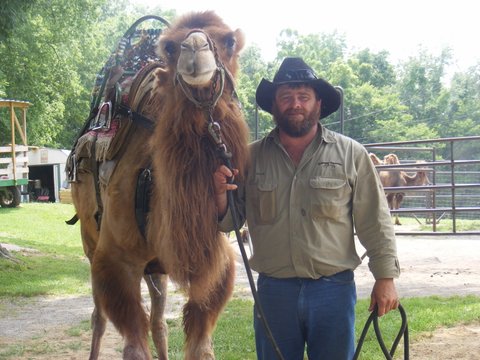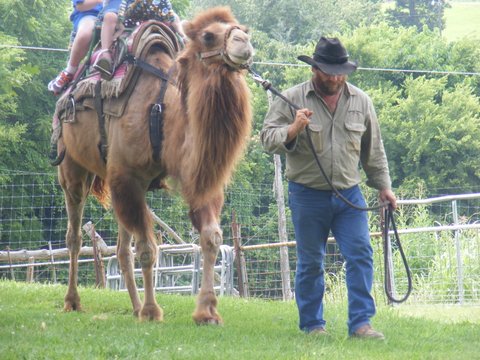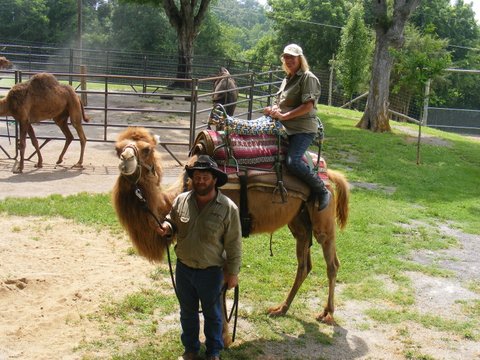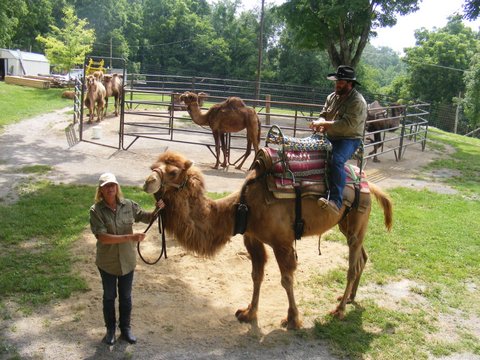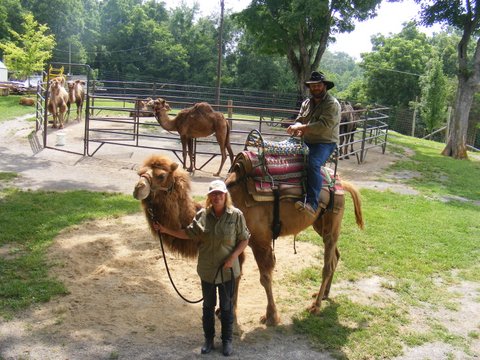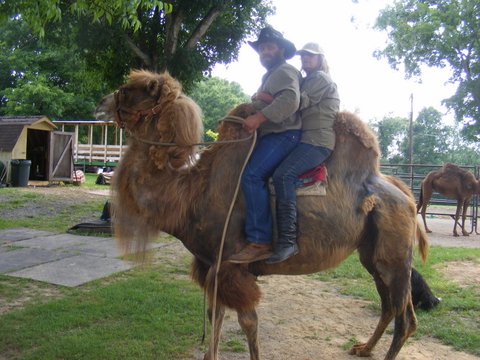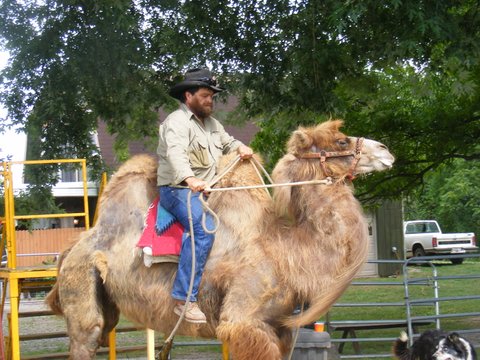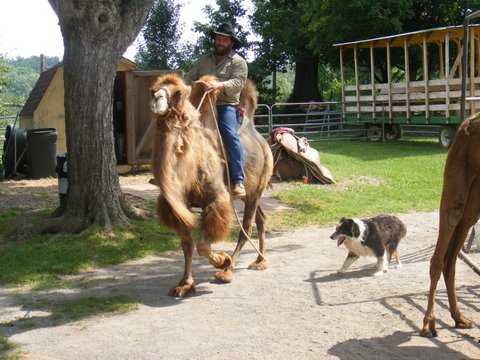About Camels

The earliest known camels originated in North America some 40-50 million years ago but were quite different to what we think of as a camel nowadays. Around 3-5 million years ago, the descendants of these early camels migrated to South America via the Panamanian land bridge and to Asia via the Bering land bridge to become the modern day camels as we known them now.
There are two types of camels : The dromedary, or one humped camel, which hails from the Middle East and Horn of Africa and the two humped camel, or Bactrian, which is found in central Asia.
Humpy Camels currently trains and works with dromedary camels but has previously trained and worked with bactrian camels as well.
The bactrian camels are by far the rarer of the species with a population thought to be around 2 million of mostly domesticated animals. A good number of wild camels still survive quite well in the Australian central deserts after being imported in the 19th century to assist with early exploration, transportation and construction activities. They were released into the wild in the early 20th century when their function was replaced by motorised vehicles.
Australia started importing the first Camels in the 1840’s, then in the 1860’s they really started to import Camels for exploration work in the outback and this continued until 1907. By the 1930’s the Camels became obsolete because of the trucks and tractors and therefore the Camels where released into the outback to become wild and today Australia is the only country that has wild Dromedary Camels. Without Camels most of Australia would not have been settled for many years. Camels carried the supplies to build the railroads, telegraph lines and carried supplies to the Outback Stations. The Police still used Camels to patrol the Outback until 1954.
The humps on camels’ backs are actually fatty deposits. They are not used, as commonly believed, for water storage. However, camels can go a long time without water. Camel’s humps are used primarily as a nutritional source if food is scarce which is often the case in the desert. The fatty tissue also acts as a type of insulation allowing camels to survive in arid climates.
In general, camels are placid animals and, in fact, in the Arabian culture they symbolise patience, tolerance and endurance.
Camels have evolved to cope well in arid environments. They can drink up to 200 litres, or 53 US gallons, of water at one time and can go up to two weeks without drinking any water. They are the only mammal to have oval shaped red blood cells and so their blood cells flow if the camel is dehydrated and do not clump together like in other mammals.
The colour of their coats reflect the sun and camels do not sweat until they are over 41 degrees Celsius.
Camels have two rows of long curly eyelashes to keep out the dust and sand of the desert and can even close their nostrils against sand and wind.
The camel has been used over centuries for transporting people, carrying heavy loads, for their hair to make clothing and for food and milk. Camel milk is very nutritious and is used for medicinal purposes.

Meet Our Camels
Kevin has several camels that he helped catch in May 2013, that are now trained and giving rides. Their names are Peanut, Coffee, Pickles and Sausage. Young Cookie is a rare white Camel but still has a year to go before his training can start.

Cream
Cream is another white Camel which stays at home base in Moora, WA.

Ruby
Ruby is our main working Camel. She goes everywhere and is young at heart and sometimes a little cheeky. Ruby is one of the favourites with girls because of her extremely long eyelashes. She is 9 years old.
Daisy
Daisy is a great little Camel. She is 4 years old.
Pickles
Pickles is our newest trained camel. She is 3 years old and was caught out of the desert in May 2013.
Peanut
Peanut is a one of a kind camel, nothing bothers him! He is 5 years old and was caught from the desert in May 2013 .
Coffee
Coffee is a sleak red camel that is a great walker and she is around 14 years old. She was also caught from the desert in May 2013 and is Tabasco’s mother.
Sausage
Sausage has a great attitude. He is 5 years old and was caught from the desert in May 2013.
Chipper
Chipper is the tallest camel and he is the slowest walker. He is 9 years old.
Tabasco
Tabasco is Coffee’s baby, he was born in June 2013. He is a dark red camel and his training will start when he is 3 years old.
Cookie
Cookie is a camel to!Bactrian Camels
Bactrian Camels are the rarer 2 hump camels that fascinate many people.
Take a look through this gallery of photos of bactrian camels during training and riding at the Circle ‘G’ ranch in Knoxville Tennessee in 2013.
Circle G Ranch
The Circle G Ranch is a 105 acre, 3 mile drive through exotic animal park with many adventures to choose from. You can drive your own vehicle through the park or rent a jeep. All the animals will come right up to your car for an up close, personal experience.


